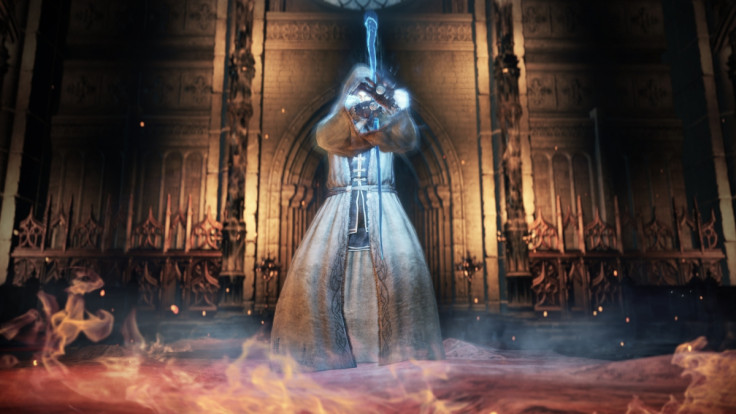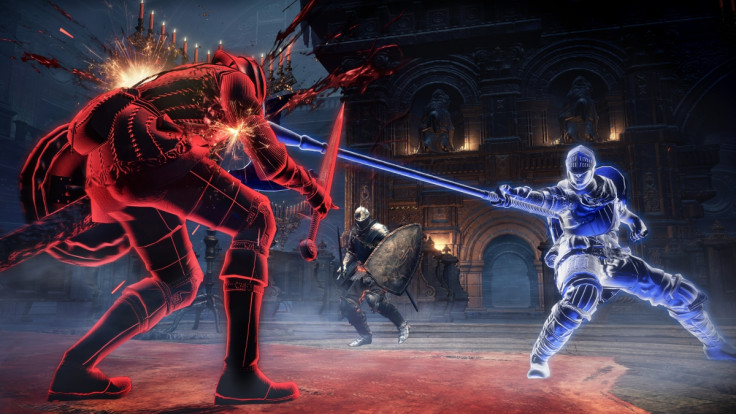Dark Souls 3 review: Embers of a brighter flame in FromSoftware's third act
On the surface, the story spanning across the Dark Souls series is nothing more than a trope – a humble, wrinkly undead rising to heroic status by restoring balance to a land fraught with strife and darkness. Okay, the 'wrinkly undead' part is a bit weird, granted, but this façade permeates both the original Dark Souls and its often-maligned sequel.
Delving into the arch, cryptic lore tells a different story however, with esoteric item descriptions and mumbled, enigmatic dialogue gradually piecing together a tale of ailing dynastic rulers destined to build great cities only to watch them crumble into dust. Quietly manipulated into slaughtering your way to infamy, your custom-character's noble sacrifice is naught but a stopgap, a nagging inconvenience to the ill-fated legacies of doomed royalty.
The problem with re-telling a tale in this cyclical fashion is that remaining untethered to past events and their enduring symbolism is almost impossible. Over time pages fray, legendary blades become blunt at the edges and tired souls grow weary.
I say this because Dark Souls 3 is undoubtedly an exceptional game, but it is also a majestic disappointment.
Those willing to accept the narrative veneer will likely herald Dark Souls 3 as the new gold standard however. While the game's underlying physics engine is starting to show its age – nothing breaks tension like a weightless ragdoll corpse – the combat mechanics in the franchise's third entry are almost impeccable.
The introduction of Weapon Arts and Focus Points complements the sequel's tightly honed advancement of the familiar Souls gameplay. Developer FromSoftware have carefully adapted the faster, reflex-intensive feel of its Souls-like horror masterpiece Bloodborne while still maintaining the kinetic and muscular style associated with Dark Souls. While a hefty shield and weighty armour is still a viable strategy as in previous games, Dark Souls 3's bestiary of eldritch fantasies and fallen knights are an aggressive bunch and invite a swift, savage response in kind.

The pinnacle of this back-and-forth, as usual for Dark Souls, lies in the fog-shrouded realms of the game's boss encounters. Eschewing the reliably cheap dodge-circle-stab routine of previous instalments, Dark Souls 3's gallery of barbarous monstrosities presents a tactical challenge where patience is as important as going in for the kill. The consistency of these battles is a series highlight and challenging the expert duellists and mountainous foes within Dark Souls 3's rotting chambers is pure boss-rush bliss.
While Dark Souls multiplayer has always been among the most intriguing interpretations of online play in modern gaming, it has absolutely reached its pinnacle here. Streamlined co-op and an array of wildly diverse covenants are all interwoven with the main quest effortlessly and have been designed with a level of pragmatism that was sorely missed in the inventive, but often infuriating, interpretations found in prior Souls games.
At a pure mechanical level then, Dark Souls 3 is returning director Hidetaka Miyazaki's magnum opus; a triumph of the 'prepare to die' mantra and a culmination of the punishing design ethos that began with 2010's Demon's Souls.
But, this is Dark Souls. This is the series that transformed numerous wrought fantasy clichés into a triumph of calculated fear and tangible oppression. If Dark Souls's Lordran was a violent nightmare of labyrinthine geography and pyrrhic victories, then Dark Souls 3's kingdom of Lothric is frequently its fragmented echo – an unpleasant daydream that demands your attention, but never truly gets under your skin.

Aside from a few notable exceptions – the disquieting, eerie chill of Irythrill of the Boreal Valley is a particular highlight – the environments in Dark Souls 3 exist under a heavy shadow of familiarity. The world's ambivalence towards the Unkindled Ash protagonist is one mirrored by the player (even if only subconsciously) as traipsing through uncanny replicas of previous locations dulls their overall impact.
Little of the mosaic structure found in the game's promising initial stages are found as you progress, while the abundance of returning enemy types and the frequency of 'safe-zone' bonfires puncture Dark Souls 3's best moments with hints of mundanity. It is telling that the most awe-inspiring vistas and claustrophobic locales in Dark Souls 3 are either reminiscent of places we've seen before, or literally are those same places.
There is safety in this self-referential design, which directly contradicts the peril that emerges from the expertly-crafted gameplay. This creates a disparity in tone and an inescapable disconnect between atmosphere and interaction that makes Dark Souls 3 somewhat 'hollow' itself; like a muddled greatest hits collection from your favourite artist, where the finest tracks lack their original verve when extricated from the context of a singular, carefully curated album.
'And so it is that Ash seeketh Embers' foretells the narrator of the stunning introductory cinematic. It is a pity then that Dark Souls 3, even in spite of its mechanical brilliance and fleeting moments of triumph, is the dwindling embers of a once potent and ultimately more beautiful flame.
After the miasmic thrill of Bloodborne and the weighty expectation following Miyazaki's return, Dark Souls 3 was almost burdened with an impossible task from the outset. While the game is an absolute masterclass in action RPG design, there is an inescapable sense that old ground is being re-tread. A reliance on geographical call-backs, stock-enemies and series in-jokes muddy the tone and mystique that made its direct predecessors such a joyfully bleak experience. While the superbly visceral gameplay, intense boss fights and improved online features mark FromSoftware's latest out as one of 2016's best, Dark Souls 3's flickering fire is ultimately engulfed by its own bright history.
For all the latest video game news follow us on Twitter @IBTGamesUK.
© Copyright IBTimes 2025. All rights reserved.




















